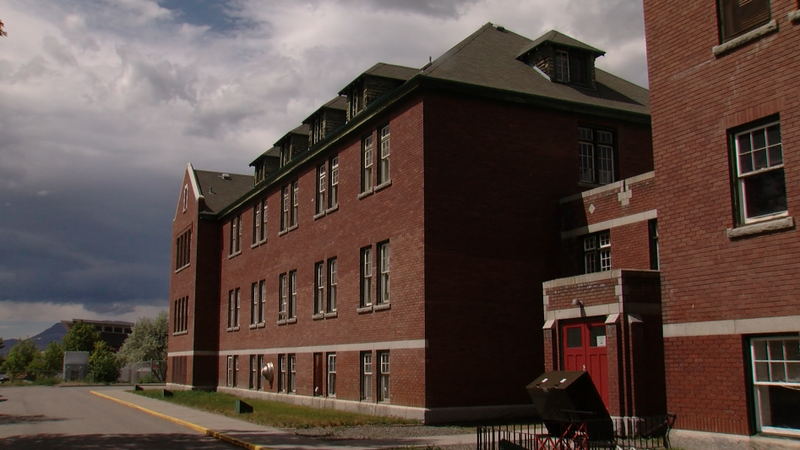More unmarked graves likely to be discovered at former Kamloops residential school: report

DISCLAIMER: Some of the details in this story may be disturbing to some readers.
KAMLOOPS — The number of children that may be buried in unmarked and undocumented graves at the site of the former Kamloops Indian Residential School may be much higher than the 215 already believed to have been discovered.
Dr. Sarah Beaulieu, a ground-penetrating radar (GPR) specialist who was part of the investigation, said there is much more work to be done.
The findings of a report were released Thursday morning about the remains found on the site.
Tk’emlúps te Secwépemc Chief Rosanne Casimir started the event by saying they stand with residential school survivors across the country. “We see you and we believe you,” she said.
“We are forever thankful for your willingness to carry this burden of truth forward, so we could verify with science where some of the missing children’s remains are located on the grounds of the Kamloops residential school.”
In late May it was revealed that more than 200 children in unmarked graves had been discovered at the former Kamloops residential school site.
About two acres were scanned at the apple orchard located near the residential school. This location was chosen based on survivors’ reports and the finding of a juvenile rib bone and tooth in the soil during another dig, Beaulieu said.
More than 160 acres still require surveying.
“There are very likely to be a number of human burials in the area,” Beaulieu said. “This investigation has barely scratched the surface.”
“GPR is not needed to know children went missing. GPR only provides spatial specificity to this truth.”
Casimir said the presence of the remains was “a knowing” in the Tk’emlups community, but was confirmed with the help of the radar.
“I stand here strong because of the community and because of the immense support that I have received from the community since the news broke out on May 27,” she added.
The children, some as young as three, were students at the school, which was once the largest in Canada’s residential school system.
In existence from 1890 to 1978, and with a wide regional grasp, one report says enrolment peaked in the early 1950s at 500 students.
The federal government took over the administration of the school from 1969 to 1978, using the building as a residence for students attending other Kamloops schools.
Casimir said Thursday that “this is heavy truth” in what is being revealed about the findings at the residential school.
“You are bearing witness to a very important truth of Indigenous People and Canada has been referred to as a historic dark chapter but Indigenous People are very much alive to the repercussions they are living today,” Casmir said.
She added the Catholic Church, which ran the school before the government took over, has so far refused to officially apologize for its role in the residential school system.
“There has never been an apology from the highest level of the Roman Catholic Church. To be clear the Roman Catholic Church has repeatedly refused to apologize for the numerous and horrific abuses through the residential schools system.”
Casmir wants the attendance records of all residential schools released to assist in the investigation.
The Truth and Reconciliation Commission said large numbers of Indigenous children either ran away from residential schools or died at the schools, their whereabouts unknown.
Speaking at the event on Thursday, Dr. Lisa Hodgetts, president of the Canadian Archaeological Association, said “further work is clearly needed to identify further graves.”
“We are talking about thousands and thousands of missing students. It is clear the money provided by the government is going to fall short,” she said.
In June, the discovery of hundreds of remains were found in Brandon, Man., Saskatchewan’s Cowessess First Nation and Cranbrook, B.C. at former residential school sites.
To date, the number of remains reported to be found across the country totals well over 1,000.
Earlier this week, it was announced that more than 160 undocumented and unmarked graves were found on the site of a former school on a B.C. island.
The Penelakut Tribe first issued a letter on Thursday saying the graves were found on the grounds of the former Kuper Island Indian Industrial School, which was located on what is now known as Penelakut Island between Vancouver Island and mainland B.C.
“All residential school sites likely contain remains of missing children,” Beaulieu said Thursday.
Speaking at the event was Casimir, Tk’emlúps te Secwépemc legal council, ground-penetrating radar specialists and other experts, Kamloops Indian Residential School survivors and an intergenerational survivor.
——


